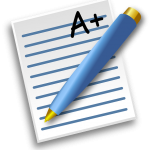Match the following words with the most appropriate definition:
Curative Diagnostic Destructive Palliative Prophylactic Replacement
1. ____________________________ Medications, such as hormones and vitamins that are used to replenish substances normally found in the body.
2. ____________________________ Medications such as used in radiology to allow a doctor to see the location of a tumor or other disease process.
3. ____________________________Medications used to promote the quality of life by relieving or soothing the symptoms of disease or disorder without curing it.
4. ___________________________ Medications used in the treatment of diseases, such as insulin to treat diabetes.
5. ___________________________ Medications, such as immunizations, that are used to prevent or lessen the severity of a disease, such as flu shots.
Multiple Choice
Identify the choice that best completes the statement or answers the question.
6. The process by which the drug is eliminated from the body is known as:
- Absorption
- Distribution
- Excretion
- Metabolism
7. The process by which the drug is delivered from the systemic circulation to body tissues and fluids is known as:
- Absorption
- Distribution
- Excretion
- Metabolism
8. Action of two drugs working together, in which each helps the other simultaneously for an effect that neither could produce alone refers to:
a. Synergism
b. Margin of safety
c. Paradoxical reaction
d. Antagonism
9. Which term refers to the unintended and undesirable effects of drugs?
a. Interactions
b. Precautions
c. Indications
d. Side effects/adverse reactions
Match the dosage description with the definition:
a. Minimum dose b. Maximum dose c. Loading dose d. Maintenance dose
e. Toxic dose f. Lethal dose g. Therapeutic dose
10. ____ dose required to keep the level of a drug in the blood at a steady state in order to maintain the desired effect.
11. ____dose that is customarily given and adjusted according to variations from the norm.
12. ____initial high dose used to quickly elevate the level of a drug in the blood.
13. ____smallest amount of drug that will produce the desired therapeutic effect.
14. ____dose that causes death
15. ____largest amount of a drug that will produce a desired effect without producing the symptoms of toxicity.
16.____amont of a drug that will produce harmful side effects or symptoms of poisoning.
17. Identify the Seven Rights to Medication Administration. Place a check mark by the appropriate components of the Seven Rights.
____Right Time
____Right Documentation
____Right Individual
____Right Place
____Right Route
____Right Color of Pills
____Right Dose
____Right Medication
____Right Technique
18. Two oversight agencies
- FDA-
- DEA-
19. What would be the Controlled Substance label notation to indicate that the drug is the most dangerous regarding addictiveness or potential for abuse?
a. C-I
b. C-III
c. C-IV
d. C-V
20. Which is the drug name that describes the molecular structure of a drug?
a. Chemical name
b. Generic name
c. Official name
d. Brand or trade name
21. Which is also known as the trade, or proprietary, name?
a. Chemical name
b. Generic name
c. Official name
d. Brand or trade name
22. Which is an example of a generic name?
a. Bayer aspirin
b. Motrin
c. acetaminophen
d. Tylenol
23-25. Use the below medication label to respond to the following questions:
What is the prescription number for this medication?_______________________
What is the patient’s name?_______________________________
What is the name of the medication?_________________________________
Is this a generic or brand name for the medication?______________________
How many tablets are in this pill bottle?_______________________________
| Ima Notwell furosemide 10 mg Take one tablet orally daily Qty: 30 Refills: 11 |


